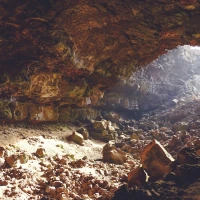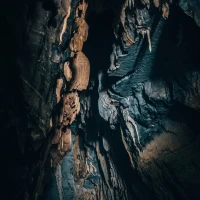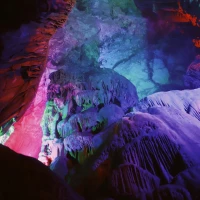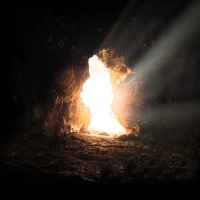Embark on an underwater journey like no other as you explore the shadowy depths of the world’s most breathtaking caverns. Cave diving combines the thrill of exploration with the beauty of the underwater world, offering an adventure that’s both challenging and rewarding. It’s a realm where darkness reigns, where the silence is absolute, and where the only light comes from your torch, dancing across ancient rock formations. From novice diver to seasoned professional, our comprehensive guide will equip you with the knowledge, skills, and confidence to master the art of cave diving, taking you beyond the surface into the heart of the earth’s most secretive aquatic chambers.
The Lure of the Underworld: What Draws Us to Cave Diving?
Cave diving is not for the faint of heart. It calls to those who hear the whisper of the unexplored, those who seek a deeper connection with nature, and those who revel in the unique combination of danger and beauty. Here’s what makes this pursuit so irresistibly alluring:
- The thrill of discovery: Underwater caves are some of the last uncharted territories on our planet.
- Unique ecosystems: Witnessing marine life that has evolved in complete isolation.
- The ultimate challenge: Sharpening your diving skills in a demanding and dynamic environment.
Begin with the Basics: Understanding Cave Diving
Before delving deeper, it’s important to comprehend what cave diving entails:
- Definition and Differentiation: Unlike open-water diving, cave diving involves penetrating submerged caves, which requires specialized training and equipment.
- Essential Skills: Mastery over buoyancy, navigation, and stress management is crucial.
- Complex Navigation: Tracking guideline placement and understanding directional markers are fundamental.
Gear Up: The Right Equipment for Cave Diving
The right gear is your lifeline in the depths of a cave. It’s not just about having the right items, but also knowing how to use them effectively:
- Primary and Backup Lights: Illuminate the darkness and ensure safety.
- Guidelines and Reels: Navigate back to the entry point without fail.
- Redundant Breathing Systems: Always have a backup in the unforeseen event of equipment failure.
Preparing for the Plunge: Essential Training for Cave Divers
Undertaking comprehensive training is non-negotiable. There are specialized courses available that provide the necessary skills and knowledge. Look for certifications from recognized organizations such as the National Association for Cave Diving (NACD) or Cave Diving Group (CDG).
Beginning Your Training: Courses and Certifications
Start with a basic cave diving course that introduces you to the following:
- Cavern Diving: The first step, focusing on diving in the light zone of a cave.
- Introduction to Cave Diving: Learning basic cave navigation and guideline techniques.
- Apprentice Cave Diving: Building on your skills, allowing limited penetration into caves.
Advanced Training: Honing Your Skills
After mastering the basics, advanced courses prepare you for more challenging dives:
- Full Cave Diver: The pinnacle of cave diving certifications, allowing extensive penetration into cave systems.
- Technical Cave Diving: Incorporates the use of mixed gases and staged decompression.
Safety Protocols: Mitigating Risk in Cave Diving
Cave diving is inherently risky. Understanding and adhering to safety protocols is key:
- Rule of Thirds: Managing air supply to ensure you always have enough to return to the surface.
- Buddy System: Diving with a partner to assist in emergencies.
- Communication: Mastering hand signals and line markers to convey messages in the silent world below.
Emergency Procedures: What If Things Go Wrong?
In case of emergencies, knowing the correct procedures can be life-saving:
- Lost Line Procedures: Re-establishing a connection to your guideline when visibility is compromised.
- Out-of-Air Situations: How to safely share air with your buddy or utilize your redundant system.
- Entanglement: Escaping safely from nets or lines without panicking.
The Diver’s Progression: Charting Your Journey from Beginner to Pro
A diver’s progression in cave diving is marked by milestones, each requiring dedication, practice, and a respect for the underwater environment. Let’s compare the stages of this progression:
Novice to Competent: The Learning Curve
- Building Experience: Begin by diving frequently within the limits of your training.
- Mentorship: Seek guidance from experienced cave divers or instructors.
- Incremental Challenges: Slowly increase the complexity of your dives while remaining within safe parameters.
Competent to Expert: Refining Skills and Knowledge
- Continued Education: Attend workshops and further training to refine your techniques.
- Specialized Equipment: Learn to use technical gear, such as rebreathers and sidemount configurations.
- Conservation: Become an advocate for preserving underwater cave systems.
Expert to Master: Pioneering New Depths
- Exploration: Participate in expeditions to undiscovered cave systems.
- Leadership: Lead dives and contribute to the training of new divers.
- Research: Engage with scientific communities to study underwater ecosystems.
In Practice: Real-World Cave Diving Destinations
To truly master cave diving, you need to experience different environments. Here are some renowned destinations that offer a diverse range of underwater landscapes:
The Yucatan Peninsula, Mexico
- Dos Ojos: A beginner-friendly site with clear waters and stunning formations.
- The Pit: A deeper site offering a blend of fresh and saltwater layers.
Florida Springs, USA
- Ginnie Springs: Home to the well-known Devil’s Eye and Ear cave systems.
- Jackson Blue: Known for its extensive underwater cave network.
Nullarbor Plain, Australia
- Cocklebiddy Cave: Offers one of the longest underwater passages in the world.
- Murra El Elevyn Cave: A challenging dive requiring advanced skills and equipment.
Deep Dive: Essential Techniques and Best Practices
Expertise in cave diving relies on mastering core techniques and best practices:
- Buoyancy Control: The cornerstone of safe cave diving keeps you stable and minimizes silt disturbance.
- Precision Guideline Use: The lifeline within a cave needs to be deployed and followed with utmost precision.
- Situational Awareness: Being vigilant of your surroundings, air supply, and team at all times.
Night Dives vs. Cave Dives: Understanding the Difference
Although similar in some aspects, night and cave diving are fundamentally different. Night dives are usually conducted in open water with reduced visibility, while cave dives involve total darkness and confined spaces.
Diving into the Details: Advanced Cave Diving Techniques
As you progress to advanced levels, you need to master more sophisticated techniques:
- Sidemount Diving: Offers better maneuverability and redundancy in tight spaces.
- Stage Diving: Using multiple tanks to extend range and manage decompression.
- Zero Visibility Diving: Relying on touch and other senses when visibility fails.
Embracing Conservation: Protecting Our Subterranean Sanctuaries
Cave divers play a crucial role in conservation:
- Ecosystem Impact: Understand how your presence affects the delicate cave environment.
- Sustainable Diving Practices: Follow guidelines that protect aquatic life and preserve cave formations.
- Research and Advocacy: Participate in scientific research and advocate for the protection of cave systems.
Dive Preparation Checklist: Cave Diving Essentials
Before any cave dive, ensure you have the following essentials:
- Pre-Dive Safety Check: A thorough review of gear, guidelines, and communication signals.
- Dive Plan: Clearly outline your planned route, maximum depth, and air management strategy.
- Emergency Plan: Discuss potential problems and solutions with your dive team.
Gear Maintenance: Keeping Your Equipment in Top Condition
Proper maintenance of your diving equipment is non-negotiable:
- Regular Inspections: Check for wear and tear, especially on life-support equipment.
- Clean and Store Appropriately: Post-dive care is crucial for equipment longevity.
- Servicing by Professionals: Get your gear serviced regularly by certified technicians.
Conclusion: The Journey to Becoming a Pro Cave Diver
Embarking on the path to becoming a pro cave diver is a journey filled with learning, adventure, and self-discovery. Along the way, cultivate respect for the environment, a commitment to safety, and a passion for exploration. Whether you’re floating through a cathedral-like cavern or squeezing through a tight passage leading to an untouched chamber, the world of cave diving offers endless awe and wonder.
Remember, mastering the art of cave diving is not an end, but a continuing quest. As new techniques emerge and new caves are discovered, even the most experienced divers will find new challenges and experiences. So gear up, dive in, and join the ranks of those who’ve turned the silent world beneath the waves into their own sanctuary of adventure.










